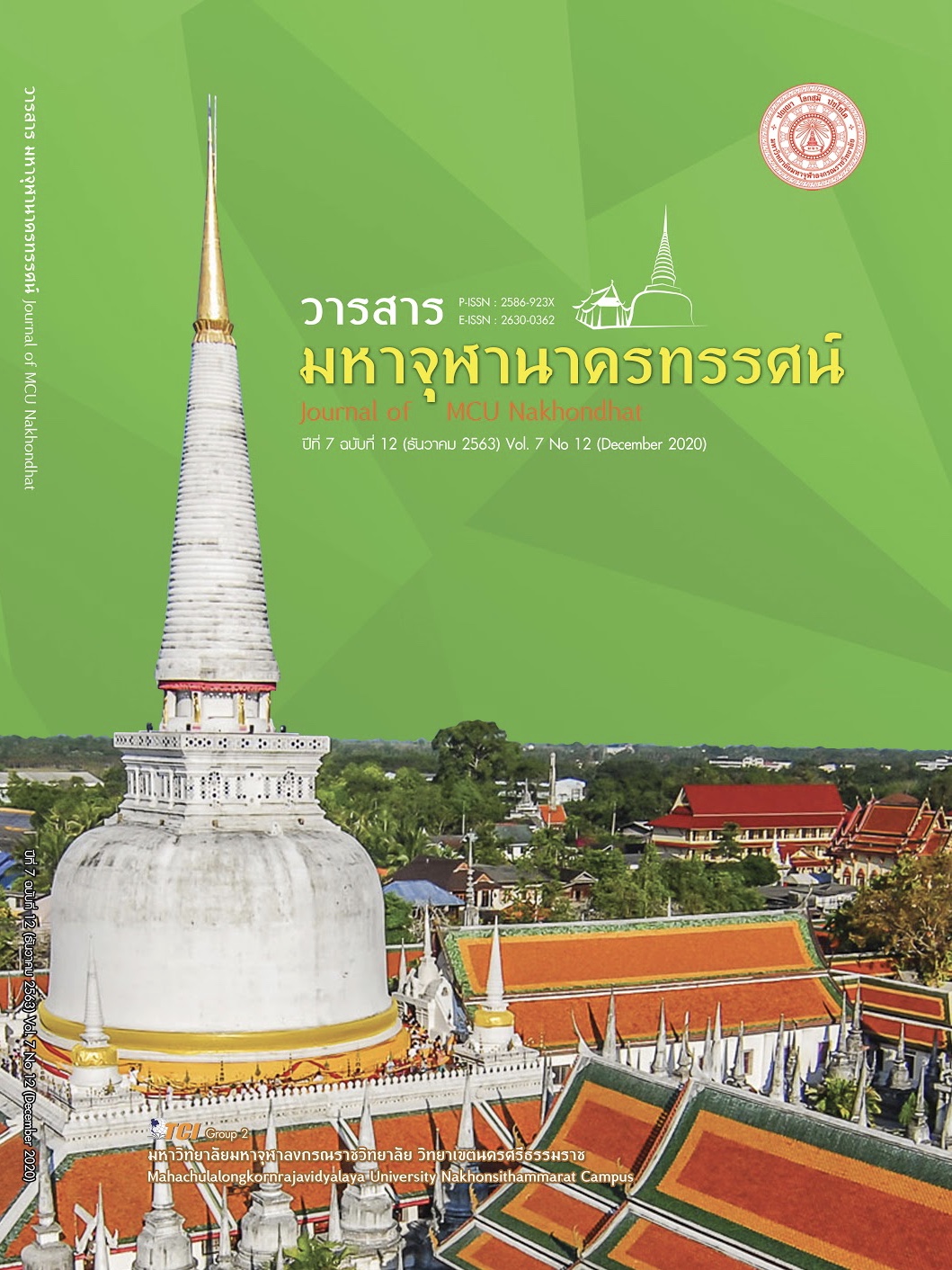DEVELOPMENT GUIDELINES FOR INFORMATION TECHNOLOGY MANAGEMENT (IT MANAGEMENT) IN EDUCATIONAL INSTITUTIONS UNDER THE PHRA NAKHON SI AYUTTHAYA PRIMARY EDUCATIONAL SERVICE AREA OFFICE 2
Main Article Content
Abstract
This research objectives of this study are: 1) To study the current situation of information technology management in educational institutions 2) To study the guideline for the development of information technology management in educational institutions. The methodology of this research can be separated into two stages: 1) Study the information technology management process of educational institution executives. The sample group consists of 133 educational institution executives from institutions which were selected through stratified sampling. Questionnaires, which have a Reliable Coefficient Value of 0.98, are used as the tool for this stage. Statistics tools used in this process are percentage, mean values, and standard deviation. 2) Studying the guideline for the development of information technology management in educational institutions. There are five main informants who were selected specifically for this stage. The tool used in this stage is a semi - structured interview with content analysis. The results of this research concludes that 1) The condition of information technology management in educational institutions is on the highest level (overall). And when analyzed in different categories, it was found that the category with the highest value is Planning, while the category with the lowest value is Development of information 2) technology management in educational institutions when analyzed through its 4 categories, have 14 guidelines including: 2.1) Planning information technology management has 3 guidelines, for example – Educational institutions must analyze in the prior year to incorporate in its new operational plans to achieve its goals. 2.2) Operations has 5 guidelines, for example – Educational institutions must create a plan to request development budget with phases of operations. 2.3) Information technology management assessment has 3 guidelines, for example – Educational institutions must conduct After Action Review (AAR) to use in SWORD analysis in order to seek for issues for further development. 2.4) Development of information technology management has 3 guidelines, for example – Educational institutions must analyze and study the development guidelines to select qualified internal personnel as a specialist to scrutinize and develop its information technology services.
Article Details
References
กาญจนา เอียดสุย. (2560). การมีส่วนร่วมในการจัดการศึกษาของผู้ปกครอง โรงเรียนเขาชัยสน อำเภอเขาชัยสน จังหวัดพัทลุง สำนักงานเขตพื้นที่การศึกษามัธยมศึกษา เขต 12. ใน วิทยานิพนธ์ครุศาสตรมหาบัณฑิต สาขาการบริหารศึกษา. มหาวิทยาลัยหาดใหญ่.
ทิพย์วรรณ โพสุวัน และคณะ. (2555). รูปแบบการบริหารงานเทคโนโลยีสารสนเทศทางงบประมาณของโรงเรียนในภาคตะวันออกสังกัด สำนักงานคณะกรรมการการศึกษาขั้นพื้นฐาน. ใน วิทยานิพนธ์ครุศาสตรมหาบัณฑิต สาขาการบริหารศึกษา. มหาวิทยาลัยบูรพา.
นพคุณ ลักขณาวิเชียร. (18 พฤษภาคม 2563). สภาพการดำเนินงานด้านเทคโนโลยีสารสนเทศของสถานศึกษาในสังกัดสำนักงานเขตพื้นที่การศึกษาพระนครศรีอยุธยาเขต 2. (ชัชนก มั่นประสงค์, ผู้สัมภาษณ์)
นภัสกร ชาญณรงค์. (2554). การบริหารจัดการเทคโนโลยีทางการศึกษาเพิ่อพัฒนาการจัดการเรียนรู้ของอาชีวศึกษาจังหวัดนครศรีธรรมราช. ใน วิทยานิพนธ์ครุศาสตรมหาบัณฑิต สาขาวิชาเทคโนโลยีอุตสาหกรรม. มหาวิทยาลัยราชภัฏนครศรีธรรมราช.
บุรินทร์ รุจจนพันธุ์. (2556). ลิเคิร์ท (Likert Scale). เรียกใช้เมื่อ 3 พฤษภาคม 2563 จาก https://www.thaiall.com/blog/tag/likert/
ปริวรรต ธงธวัช และคณะ. (2562). ความสัมพันธ์ระหว่างการบริหารเทคโนโลยีสารสนเทศของผู้บริหารกับประสิทธิผลของระบบสารสนเทศของสถานศึกษาตามการรับรู้ของครูสังกัดสำนักงานเขตพื้นที่การศึกษามัธยมศึกษา เขต 11 ในจังหวัดสุราษฎร์ธานี. ใน วิทยานิพนธ์ครุศาสตรมหาบัณฑิต สาขาการบริหารศึกษา. มหาวิทยาลัยราชภัฏสุราษฎร์ธานี.
ศักดิ์ชริน อาจหาญ. (2559). การศึกษาการบริหารเทคโนโลยีสารสนเทศของผู้บริหารสถานศึกษาในโรงเรียนขยายโอกาส สังกัดสำนักงานเขตพื้นที่การศึกษาประถมศึกษา สุราษฎร์ธานีเขต 2. ใน วิทยานิพนธ์ครุศาสตรมหาบัณฑิต สาขาการบริหารศึกษา. มหาวิทยาลัยราชภัฏสุราษฎร์ธานี.
สำนักงานเลขาธิการสภาการศึกษา. (2560). แผนการศึกษาแห่งชาติ พ.ศ. 2560 - 2579. (พิมพ์ครั้งที่ 1). กรุงเทพมหานคร: บริษัท พริกหวานกราฟฟิค จำกัด.
สุธาสินี โพธิจันทร์. (2562). PDCA หัวใจสำคัญของการปรับปรุงอย่างต่อเนื่อง. เรียกใช้เมื่อ 3 พฤษภาคม 2563 จาก https://www.ftpi.or.th/2015/2125
สุรพงษ์ คงสัตย์ และธีรชาติ ธรรมวงค์. (2551). การหาค่าความเที่ยงตรงของแบบสอบถาม (IOC). เรียกใช้เมื่อ 15 กรกฎาคม 2563 จาก https://www.mcu.ac.th/article/ detail/14329
สุวิมล ตริกานันท์. (2557). การสุ่มตัวอย่าง. เรียกใช้เมื่อ 3 พฤษภาคม 2563 จาก http://www.udru.ac.th/website/attachments/elearning/01/07.pdf
อรุณศรี กีรติวิทยางกูร. (2559). แนวทางการบริหารจัดการการจัดแหล่งเรียนรู้ด้านเทคโนโลยีเพื่อพัฒนาทักษะการแสวงหาความรู้ของผู้เรียนโรงเรียนบ้านจ้องที่สอดคล้องกับการศึกษาในศตวรรษที่ 21. ใน วิทยานิพนธ์ครุศาสตรมหาบัณฑิต สาขาการบริหารศึกษา. มหาวิทยาลัยราชภัฏเชียงราย.


